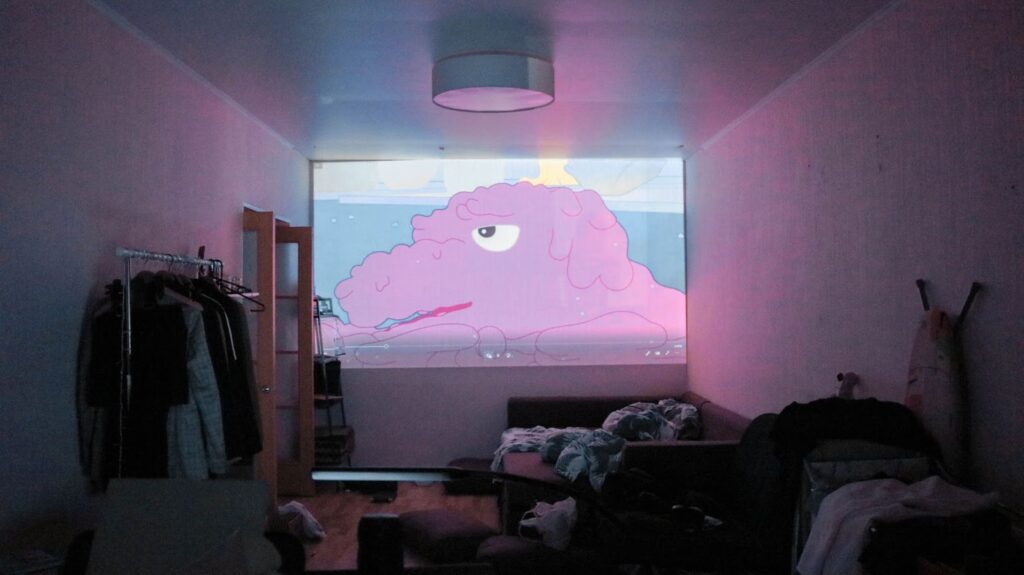How to Choose Best Projector Resolution For Education
-
 Written by:
Kristy Roger
Written by:
Kristy Roger
- Last Updated:
Do you ever get stuck in a classroom where you can’t make out what’s on the projector screen? Yeah, it’s a drag.
You’re in the right spot to avoid making that mistake in your own educational setting.
Trust me, the resolution you pick isn’t just a number; it’s the key to keeping students engaged and learning.
Why focus on this? A crisp resolution turns boring slides into eye-catching visuals. It can make the difference between students zoning out or tuning in. Classroom size matters, too.
A big lecture hall needs a different setup than a cozy classroom. Plus, let’s be real, you don’t want to fumble with tech issues when you’re trying to teach.
And if you’re like me, you’re probably working with a budget that doesn’t stretch too far.
So, hang tight as we dive into picking the perfect projector resolution for any educational setting.
Your students, and your wallet, will be super grateful!
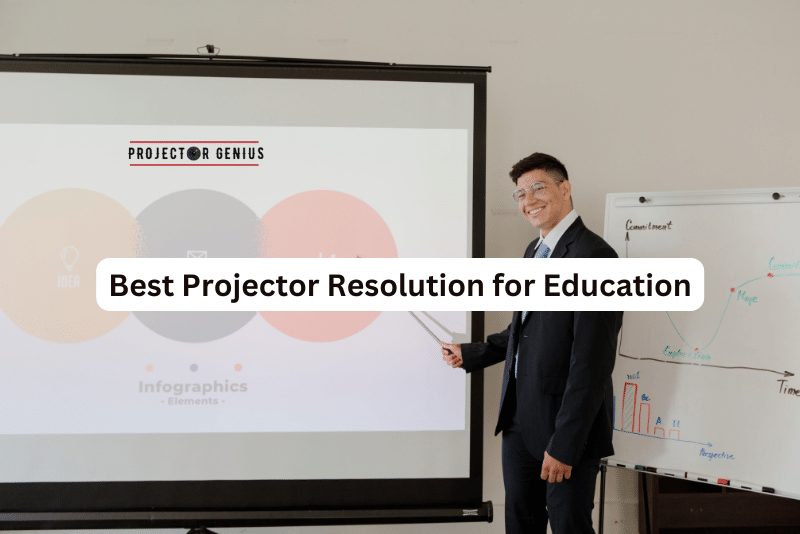
I recommend using the Table of Contents to quickly access the information you need.
My article is designed to cater to home cinema users of all levels, from Beginners to Advanced enthusiasts.
Table of Contents
The Most Common Education Projector Resolutions
Let’s dive into the most common education projector resolutions.
720p
In educational settings, a 720p projector can be a practical choice, especially for smaller classrooms or home learning environments. It provides clear and legible visuals for standard educational content. Budget-friendly and widely compatible with various devices, it can effectively serve the needs of basic presentations.
1080p
Considered a versatile option, a 1080p projector offers a balanced resolution for educational purposes. It ensures that text, images, and videos are displayed with sharpness, aiding in effective teaching. This resolution is widely supported and strikes a good balance between quality and affordability, making it a popular choice for many educational institutions.
4K
For specialized educational needs, particularly in fields requiring intricate visuals like science or engineering, a 4K projector is highly beneficial. It offers exceptional clarity and detail, ensuring that complex scientific diagrams or high-definition videos are displayed accurately. While higher in cost, it provides an immersive learning experience, making it a valuable tool in advanced educational settings.
What is the Best Projector Resolution for Education?
The best projector resolution for education is 1080p. This resolution offers clear and sharp images, making it easier for students to understand and engage with the content. Higher resolutions like 4K can be too expensive for most educational settings and may not provide a significant improvement in learning experience.
1080p strikes a good balance between quality and affordability. It ensures that text, diagrams, and videos are displayed with sufficient clarity for effective teaching. This resolution is widely supported and compatible with various devices, making it convenient for educators.
It’s important to remember that factors like screen size, ambient light, and content type also play a role in the overall visual experience. So, while 1080p is a solid choice, it’s essential to consider the specific needs and conditions of the educational environment.
Best Projector Resolution for Classroom
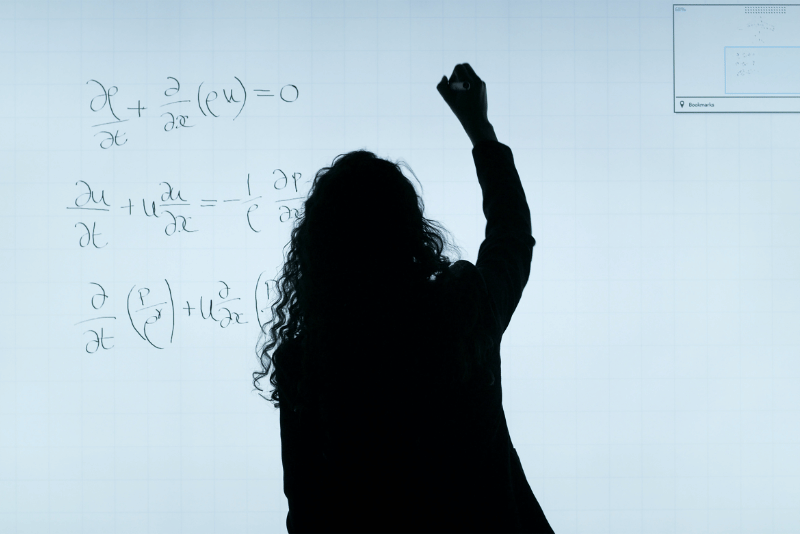
In my experience, the best projector resolution for a classroom setting is 1080p. This resolution strikes a good balance between clarity and cost-effectiveness. It ensures that text, images, and videos are displayed with sharpness, making it easier for students to grasp the material.
Higher resolutions like 4K can be overly expensive for most educational budgets. Moreover, they might not provide a significant improvement in the learning experience, given the typical screen sizes in classrooms. Sticking with 1080p ensures that you get a high-quality visual display without breaking the bank.
Additionally, 1080p is widely supported and compatible with a variety of devices, which adds to its convenience. This means you won’t have to worry about compatibility issues when connecting laptops, tablets, or other devices to the projector.
Best Projector Resolution for College Dorm
In my opinion, the best projector resolution for a college dorm would be 720p. This resolution strikes a balance between quality and affordability, making it suitable for a dormitory setting.
While higher resolutions like 1080p can offer crisper images, they might be overkill for a smaller space like a dorm room. Plus, 720p projectors tend to be more budget-friendly, which is a significant consideration for college students.
Furthermore, a 720p resolution is generally sufficient for the typical screen size found in dorm rooms. It provides clear and readable text, making it suitable for educational presentations and movie nights alike.
Considering the often limited space and varying ambient light conditions in dormitories, a 720p projector would likely meet the needs of most college students. It strikes a practical balance between quality and cost that’s well-suited for this specific environment.
Best Projector Resolution for Excel Spreadsheet
The best projector resolution for displaying Excel spreadsheets is 1080p. This resolution provides the clarity needed to showcase detailed data and text in a legible and comprehensible manner.
Higher resolutions, such as 4K, may offer exceptional detail, but for most spreadsheet applications, 1080p is more than sufficient. It strikes a good balance between quality and cost-effectiveness, ensuring that numbers and text are sharp and easily readable.
Additionally, 1080p projectors are widely available and compatible with various devices, making them practical for business and educational settings. They provide a seamless connection to laptops, tablets, and other devices commonly used for spreadsheet presentations.
Considering the specific demands of Excel spreadsheets, a 1080p resolution offers the optimal visual experience. It allows for precise analysis and interpretation of data, enhancing productivity and effectiveness in meetings and presentations.
Best Projector Resolution for School Auditorium
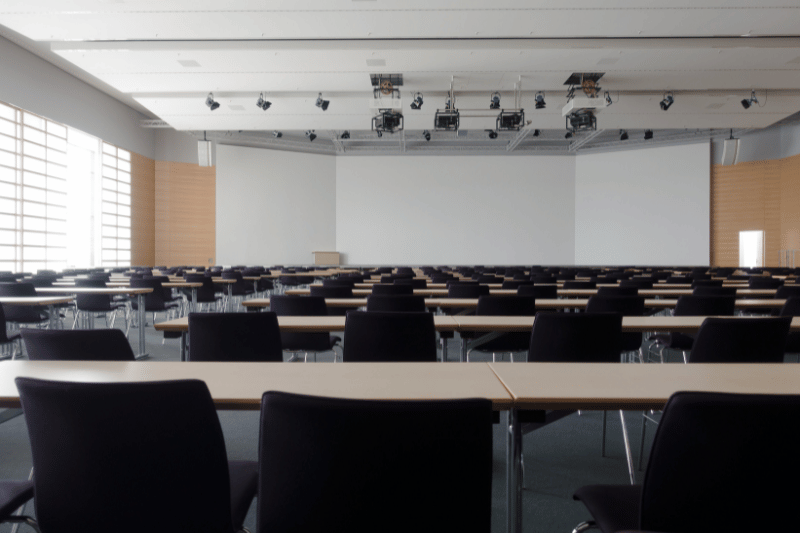
In my view, the best projector resolution for a school auditorium would be 4K. This resolution offers incredibly sharp and detailed images, making it ideal for larger spaces like an auditorium. It ensures that every seat in the audience can clearly see the content being displayed.
In a venue as sizable as a school auditorium, a higher resolution like 4K is worth the investment. It provides a level of clarity and precision that can truly enhance presentations, lectures, and performances. The finer details become much more discernible, which is particularly important for complex visuals.
Moreover, 4K projectors can accommodate larger screen sizes without sacrificing image quality. This is crucial in an auditorium setting where a large audience needs to have a clear view of the content. It allows for a more immersive and engaging experience for everyone present.
Considering the scale and importance of events held in a school auditorium, a 4K projector would undoubtedly provide the best visual experience. It elevates presentations and performances to a whole new level, ensuring that every member of the audience can fully engage with the content.
Best Projector Resolution for Flight Simulator
In my opinion, the best projector resolution for a flight simulator would be 4K. This high-resolution setting provides an incredibly immersive and realistic experience for virtual flying.
With 4K, every detail of the cockpit, scenery, and instruments is rendered with remarkable clarity. This level of precision is crucial for a flight simulator, as it allows for a more accurate representation of real-world conditions.
Furthermore, a 4K projector ensures that text, gauges, and controls are sharp and easy to read. This is particularly important for flight simulations, where accurate data interpretation is vital for a successful experience.
While 1080p or lower resolutions may still provide an enjoyable experience, the level of detail and realism that a 4K projector brings to a flight simulator is unparalleled. It truly elevates the simulation, making it feel more like an actual flight. For enthusiasts and professionals alike, 4K is the optimal choice for a truly immersive flight simulation experience.
Factors to Consider When Selecting Projector Resolution for Education
When selecting a projector resolution for education, several factors should be taken into consideration to ensure an optimal learning experience. Here are some key factors to keep in mind:
Content Type
Consider the type of content that will be displayed most frequently. For basic text and images, a lower resolution may suffice. However, if detailed diagrams or high-definition videos are a regular part of the curriculum, a higher resolution would be preferable.
Budget Constraints
Evaluate the available budget for the projector. Higher resolution projectors tend to be more expensive. It’s important to strike a balance between budget constraints and the level of detail required for educational materials.
Screen Size and Distance
Determine the size of the screen and the distance between the projector and the screen. Higher resolutions are more beneficial for larger screens or when the audience is sitting farther away. This helps ensure that content remains clear and legible.
Room Size and Lighting Conditions
Consider the size of the room and the amount of ambient light present. In larger or well-lit rooms, a higher resolution may be necessary to maintain image clarity. Conversely, in smaller, dimly lit spaces, a lower resolution may suffice.
Compatibility with Devices
Ensure that the projector resolution is compatible with the devices that will be connected to it. This includes laptops, tablets, and other educational technology tools. Compatibility ensures seamless integration and prevents any loss of visual quality.
Future-Proofing
Anticipate future needs and technological advancements. While current educational content may not require the highest resolution, considering potential updates or changes in curriculum can help future-proof the projector investment.
Ease of Use and Maintenance
Consider the ease of setup, operation, and maintenance of the projector. Higher resolution projectors may require more sophisticated calibration and adjustments. Opt for a resolution that balances performance with ease of use.
Educational Goals and Subjects
Different subjects may have varying requirements for projector resolution. For example, subjects like mathematics or science with complex diagrams and equations may benefit from higher resolutions, while basic presentations in language arts may not require the same level of detail.
Trial and Testing
Whenever possible, conduct a trial or demonstration of the projector with actual educational content. This hands-on experience can help evaluate how well the chosen resolution meets the specific needs of the educational environment.
How to Balance Resolution with Budget and Longevity?
Balancing resolution with budget and longevity when choosing a projector is crucial for making a cost-effective and durable investment. Here are some steps to achieve this balance:
Define Priorities and Needs
Start by identifying the specific requirements for the projector. Determine the resolution needed based on the type of content to be displayed and the viewing environment. Consider whether high-definition graphics are crucial or if standard resolution will suffice.
Research Projector Options
Explore a range of projector models and resolutions that fit within the budget. Look for reputable brands known for producing reliable and long-lasting equipment. Consider reading reviews and seeking recommendations from trusted sources.
Consider Total Cost of Ownership
Look beyond the initial purchase price. Take into account maintenance costs, replacement parts, and potential upgrades. A higher resolution projector may have higher maintenance costs, so factor this into the overall budget.
Evaluate Longevity and Technology Trends
Consider how long the chosen resolution will remain relevant in educational settings. While higher resolutions offer more detailed visuals, they may also become outdated sooner as technology advances. Balance this against the expected lifespan of the projector.
Explore Refurbished or Clearance Models
In some cases, refurbished or clearance projectors can offer higher resolutions at a lower cost. These models have been inspected and may come with warranties, providing a cost-effective alternative to brand-new units.
Consider Future-Proofing
Opt for a resolution that will accommodate potential advancements in educational content and technology. While it’s essential to stay within budget, investing in a slightly higher resolution now may extend the projector’s usefulness in the long run.
Explore Financing or Leasing Options
If budget constraints are tight, consider financing or leasing options. This can spread out the cost over time, allowing for the acquisition of a higher resolution projector without a significant upfront expense.
Seek Expert Advice
Consult with technology experts, educational consultants, or IT professionals who have experience in projector selection. They can provide valuable insights and recommendations based on specific needs, budget, and long-term goals.
Prioritize Durability and Warranty
Choose a projector with a reputation for durability and reliability. Look for models with robust warranties and good customer support. This can help ensure the projector continues to perform optimally over its lifespan.
Test Before Purchase
Whenever possible, conduct a demonstration or trial of the projector with actual educational content. This hands-on experience can reveal whether the chosen resolution meets the specific needs of the educational environment.
Best Projector Resolution for Outdoor FAQs (Frequently Asked Questions)
Are there Budget-friendly Options for High-Resolution Projectors?
I’ve often wondered if there are any wallet-friendly choices for projectors with high resolutions. So, I did a bit of digging, and the answer is yes! There are definitely budget-friendly options out there that offer impressive high resolutions.
I looked into different brands and models, and I came across the HAPPRUN 1080p projector, which is quite budget-friendly, ranging from around $135 to $150.
What caught my attention is that it even includes a 100-inch screen – talk about value! This projector delivers good resolution without breaking the bank.
It also supports various connection options like smartphones, HDMI, USB, AV, Fire Stick, and even PS5. This makes it a versatile choice for different entertainment needs.
It’s reassuring to know that I don’t necessarily have to spend a fortune to experience high-resolution visuals. The HAPPRUN projector seems like a solid option for those looking for quality without a hefty price tag.
So, if you’re on the hunt for budget-friendly high-resolution projectors, this one could definitely be worth considering.
What is the Optimal Screen Size for Different Projector Resolutions?
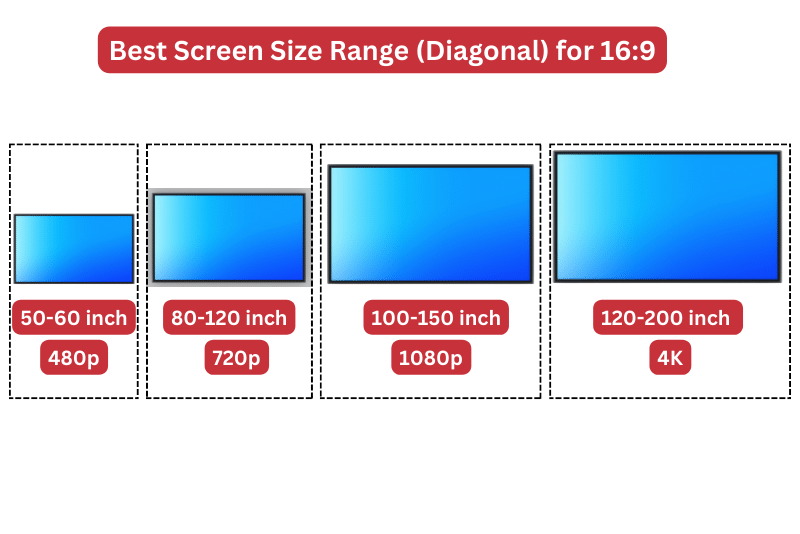
In my experience, for a 1080p projector, an optimal screen size would be around 100 to 120 inches. This size strikes a good balance between visual clarity and the viewing distance commonly found in educational or home settings.
For a 4K projector, a larger screen of 120 to 150 inches would be more suitable. The higher resolution allows for more detailed images, which can be appreciated on a larger canvas.
However, it’s important to consider the room’s dimensions and seating arrangements when determining the screen size. It ensures that everyone in the audience has a clear and engaging viewing experience.
Is a Higher Resolution always Better for Educational Projector Setups?
In my view, a higher resolution isn’t always necessary for educational projector setups. While it can offer more detailed visuals, it comes at a higher cost. For basic presentations and standard educational content, a moderate resolution like 1080p often suffices.
Moreover, factors like screen size and viewing distance play a role. In smaller classrooms, a lower resolution may even be preferable, as it meets the needs without unnecessary expense. Ultimately, it’s about finding the right balance between image quality, budget, and the specific demands of the educational environment.
Can Lower-Resolution Projectors Work Effectively in Classrooms?
In my experience, lower-resolution projectors can indeed work effectively in classrooms. A projector with a resolution of 720p or even lower can still provide clear and legible visuals for most educational content. It’s important to consider factors like screen size and viewing distance; in smaller classrooms, a lower resolution may suffice.
Additionally, budget constraints often play a significant role in projector selection. Opting for a lower-resolution model can free up resources for other educational needs. As long as the projector meets the specific requirements of the classroom, a lower resolution can be a practical and cost-effective choice.
What Resolution is Suitable for Projecting Complex Scientific Diagrams?
The higher resolution, such as 1080p or 4K, is particularly suitable for projecting complex scientific diagrams. These resolutions offer the necessary level of detail and clarity needed to display intricate graphs, charts, and diagrams accurately.
With higher resolutions, finer points and intricate details become more discernible, aiding in the comprehension of complex scientific concepts. This level of precision ensures that students can grasp the nuances of the information being presented. Therefore, for scientific education and presentations, a higher resolution projector is highly beneficial.
Should I Prioritize Resolution or Brightness for Educational Projectors?
In my view, for educational projectors, it’s important to strike a balance between resolution and brightness. Both factors play crucial roles in creating an effective learning environment.
Resolution ensures clarity in displaying content, making text and visuals easy to read and understand. On the other hand, brightness is essential for maintaining visibility in well-lit classrooms or auditoriums.
Ultimately, the ideal choice depends on the specific setting and usage. If the room tends to have ample natural light, prioritizing brightness may be key. However, in environments where detailed visuals are paramount, resolution should take precedence.
Can Standard Home Projectors be used for Educational Purposes?
Using a standard home projector for educational purposes is definitely possible, based on my experience. While they may not have the advanced features of specialized educational projectors, they can effectively display content in a classroom or home learning environment.
For basic presentations, displaying documents, or even watching educational videos, a standard projector can serve the purpose adequately. It’s essential to consider factors like resolution and brightness to ensure it meets the specific needs of the educational setting.
However, for more specialized requirements or larger audiences, it may be worth exploring projectors designed specifically for educational settings. These often come equipped with features tailored to enhance the learning experience.
Final Thoughts
Selecting the optimal projector resolution for educational settings involves a careful consideration of various factors. While 1080p remains a popular choice, offering a balanced blend of clarity and affordability for most classrooms, higher resolutions like 4K prove invaluable for subjects demanding intricate visuals.
However, the decision should always factor in budgetary constraints, screen size, and viewing distance. It’s essential to strike a balance between resolution, cost, and the specific needs of the educational environment to ensure an effective and engaging learning experience.
Ultimately, the ideal choice will vary based on individual circumstances, but a thoughtful assessment of these factors will undoubtedly lead to a well-informed decision.
Author of this Post:

Kristy Roger
Home Cinema Consultant & Tech Enthusiast
Holding a background in Industrial and Electrical Technology from the University of Alberta, Kristy has spent 5+ years consulting on home theater products at a top electronics firm. As a certified Technical Professional with Lean Six Sigma credentials, Kristy expertise ranges from projector nuances to hands-on experience with leading models. Kristy have been sharing her knowledge online for two years, blending professional insights with personal experiences from her own home cinema setup. Off the screen, She is a dedicated mom to Jerry, Ryan, and our two pups, Cuddle and Paw.

